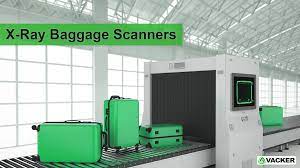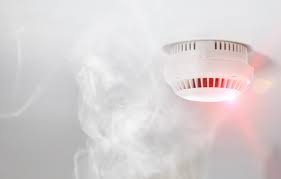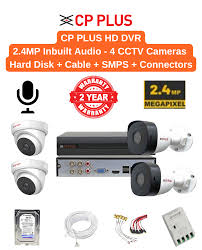X-ray Scanners: Enhancing Security and Safety
In today’s world, security is a top concern for individuals and organizations alike. Ensuring the safety of people and preventing unauthorized items from entering restricted areas has become increasingly important. This is where X-ray scanners play a crucial role.
X-ray scanners are sophisticated devices that use X-ray technology to generate images of objects or individuals. These scanners have revolutionized security measures by providing a non-intrusive and effective way to detect hidden threats, contraband, or dangerous substances.
One of the most common applications of X-ray scanners is in airports. Passengers and their luggage go through an X-ray scanner during the screening process. These scanners allow security personnel to identify any prohibited items, such as weapons or explosives, that may be concealed within bags or clothing. By quickly identifying potential threats, airport security can take immediate action to ensure the safety of passengers and staff.
X-ray scanners are not limited to airports alone. They are also used in various other settings such as government buildings, courthouses, prisons, event venues, and high-security facilities. These scanners help prevent unauthorized items from entering these premises, ensuring the safety of everyone inside.
In addition to their use in security checkpoints, X-ray scanners have found applications in industries such as manufacturing and logistics. They are used to inspect packages, cargo containers, and vehicles for any hidden objects or contraband. By using X-rays to penetrate through materials without causing damage, these scanners provide a quick and efficient method for inspecting large volumes of goods.
The benefits of X-ray scanners extend beyond security purposes. In medical settings, X-rays are commonly used for diagnostic imaging to detect fractures or abnormalities within the body. Medical professionals rely on these scans to determine the best course of treatment for patients.
It is important to note that while X-rays are generally considered safe when used properly by trained operators following established guidelines, precautions must be taken to minimize radiation exposure. Manufacturers of X-ray scanners adhere to strict safety standards and provide training to ensure that operators handle the devices correctly.
As technology advances, X-ray scanners continue to evolve. Newer models are equipped with advanced imaging software and algorithms that enhance the clarity and accuracy of the generated images. This allows security personnel to identify potential threats more easily and make informed decisions swiftly.
In conclusion, X-ray scanners have become an essential tool in enhancing security and safety across various sectors. From airports to high-security facilities, these scanners provide a non-intrusive means of detecting hidden threats or prohibited items. With their ability to quickly generate detailed images, X-ray scanners empower security personnel to take prompt action and maintain a secure environment for individuals and organizations alike.
Frequently Asked Questions About X-ray Scanners: Everything You Need to Know
- What is an X-ray scanner?
- How do X-ray scanners work?
- What are the benefits of using an X-ray scanner?
- Are X-ray scanners safe to use?
- What type of objects can be scanned with an X-ray scanner?
- How much does an X-ray scanner cost?
- Are there any special requirements for operating an X-ray scanner?
- Is it possible to get images from an X-ray scanner in real time?
- What kind of training is required to operate an X-ray scanner safely and effectively?
What is an X-ray scanner?
An X-ray scanner is a device that uses X-ray technology to generate images of objects or individuals. It works by emitting a controlled amount of X-rays that pass through the object being scanned. The X-rays are absorbed differently by different materials, allowing the scanner to create a detailed image based on the varying levels of absorption.
X-ray scanners are commonly used for security purposes, such as in airports, government buildings, and high-security facilities. They help detect hidden threats, contraband, or dangerous substances that may be concealed within luggage, packages, or clothing. By quickly identifying potential risks, security personnel can take appropriate action to ensure the safety of people and prevent unauthorized items from entering restricted areas.
In medical settings, X-ray scanners are used for diagnostic imaging to visualize internal structures of the human body. They help healthcare professionals identify fractures, abnormalities, or diseases. Medical X-ray scanners have specialized features and protocols to ensure patient safety and minimize radiation exposure.
X-ray scanners have evolved over time with advancements in technology. Modern scanners often incorporate advanced imaging software and algorithms to enhance image clarity and accuracy. This allows operators to identify potential threats more easily and make informed decisions swiftly.
It’s important to note that while X-rays are generally considered safe when used properly by trained operators following established guidelines, precautions must be taken to minimize radiation exposure. Manufacturers of X-ray scanners adhere to strict safety standards and provide training to ensure that operators handle the devices correctly.
Overall, X-ray scanners are valuable tools in various industries where security screening or medical imaging is required. They provide a non-intrusive means of obtaining detailed images that aid in maintaining safety and making informed decisions for the well-being of individuals and organizations alike.
How do X-ray scanners work?
X-ray scanners work based on the principles of X-ray imaging technology. Here is a simplified explanation of how X-ray scanners function:
- X-ray Generation: X-ray scanners consist of an X-ray generator that produces a controlled beam of X-rays. This generator typically contains a cathode and an anode. When electrical energy is applied, electrons are emitted from the cathode and accelerated towards the anode.
- X-ray Beam Formation: As the accelerated electrons strike the anode, they interact with a metal target, usually tungsten or molybdenum. This interaction produces X-rays through a process called Bremsstrahlung radiation.
- Object Scanning: The generated X-rays pass through the object being scanned, such as luggage or cargo, before reaching a detector on the other side. The object acts as a barrier to the X-rays, causing some of them to be absorbed while others pass through.
- Image Formation: The detector in the scanner captures the remaining X-rays that have passed through the object. These detectors are typically made of scintillation crystals or solid-state materials that convert incoming X-rays into visible light or electrical signals.
- Image Processing: The captured data is then processed by sophisticated software algorithms that analyze and enhance the image quality for better visibility and accuracy. This processing helps highlight any potential threats or prohibited items that may be present within the scanned object.
- Image Display: The processed image is displayed on a monitor for security personnel to examine and interpret. They can identify any suspicious objects or anomalies within the scanned item based on their training and experience.
It’s important to note that different types of X-ray scanners may employ variations in their technology and components, but they generally follow these fundamental principles.
X-ray scanners are designed to provide detailed images by differentiating between various materials based on their ability to absorb or transmit X-rays differently. Dense materials like metals appear as solid, opaque areas on the X-ray image, while less dense materials like plastics or organic substances appear as less opaque or transparent regions.
Overall, X-ray scanners offer a non-intrusive and efficient method for security personnel to detect potential threats or prohibited items concealed within objects, contributing to enhanced security measures in various settings.
What are the benefits of using an X-ray scanner?
Using an X-ray scanner offers several benefits in various fields, including security, healthcare, and industry. Here are some key advantages:
- Enhanced Security: X-ray scanners provide a non-intrusive method of identifying concealed threats or prohibited items. They help security personnel detect weapons, explosives, drugs, or other dangerous substances that may be hidden within luggage, packages, or clothing. By quickly identifying potential risks, X-ray scanners enable prompt action to ensure the safety of individuals and prevent unauthorized items from entering secure areas.
- Non-Destructive Inspection: X-ray scanners allow for the inspection of objects without causing damage. Whether it’s luggage at an airport or packages in a logistics facility, X-rays penetrate through materials to create detailed images without the need for physical intrusion or opening containers. This non-destructive inspection ensures that goods remain intact and undamaged during the screening process.
- Rapid Screening: X-ray scanners provide fast and efficient screening capabilities. They can process large volumes of items within seconds, making them ideal for high-traffic areas such as airports or event venues where time is of the essence. The speed of X-ray scanning allows for smooth flow and minimizes delays in security procedures.
- Accurate Detection: Modern X-ray scanners are equipped with advanced imaging software and algorithms that enhance image clarity and accuracy. This enables security personnel to identify potential threats more easily and make informed decisions swiftly. By providing clear visuals of objects being scanned, X-ray scanners minimize false alarms and increase detection accuracy.
- Medical Diagnosis: In healthcare settings, X-ray scanners play a vital role in diagnostic imaging by producing detailed images of internal structures within the human body. These scans help doctors identify fractures, abnormalities, or diseases so they can provide appropriate treatment plans for patients.
- Versatility: X-ray scanners offer versatility in their applications across different industries. They can be used to inspect various types of objects such as luggage, packages, cargo containers, vehicles, or even individuals. This flexibility makes X-ray scanners adaptable to different security and inspection needs.
- Training and Safety: Manufacturers of X-ray scanners provide training to operators to ensure safe and proper usage of the equipment. Strict safety standards are followed to minimize radiation exposure and protect both operators and those being scanned. Regular maintenance and calibration of the scanners are also conducted to ensure optimal performance and accuracy.
In summary, the benefits of using an X-ray scanner include enhanced security, non-destructive inspection, rapid screening, accurate detection, medical diagnosis capabilities, versatility in applications, and adherence to safety standards. These advantages make X-ray scanners invaluable tools in maintaining safety and efficiency across various sectors.
Are X-ray scanners safe to use?
X-ray scanners, when used properly and following established guidelines, are generally considered safe. However, precautions must be taken to minimize radiation exposure and ensure the well-being of individuals who come into contact with these scanners.
Manufacturers of X-ray scanners adhere to strict safety standards and regulations to ensure that their devices emit the lowest possible amount of radiation necessary for effective imaging. These scanners are designed to limit radiation exposure by using shielding materials and advanced technology.
Furthermore, trained operators play a crucial role in maintaining safety when using X-ray scanners. They receive specific training on how to operate the equipment correctly, follow safety protocols, and minimize unnecessary exposure. Regular maintenance and calibration of the scanners are also important to ensure accurate results while keeping radiation levels within acceptable limits.
It is worth noting that the level of radiation emitted by X-ray scanners is generally considered low. However, repeated exposure over an extended period can potentially pose health risks. To mitigate any potential risks, regulatory bodies set guidelines and limits on radiation doses for both operators and individuals being scanned.
For individuals who may have concerns about their personal health or specific vulnerabilities to radiation, it is advisable to inform the operator before undergoing an X-ray scan. This allows the operator to take appropriate measures or suggest alternative screening methods if necessary.
In summary, X-ray scanners are designed with safety in mind and are considered safe when used properly by trained operators following established guidelines. By adhering to recommended practices and regulations, the risks associated with radiation exposure can be minimized, ensuring the well-being of both operators and individuals being scanned.
What type of objects can be scanned with an X-ray scanner?
X-ray scanners are capable of scanning a wide range of objects, allowing for effective detection and inspection. Some common objects that can be scanned with an X-ray scanner include:
- Luggage and Bags: X-ray scanners are commonly used in airports and other security checkpoints to scan passenger luggage and bags. This helps identify any prohibited items, such as weapons, explosives, or liquids exceeding the allowed limit.
- Packages and Parcels: In logistics and shipping industries, X-ray scanners are used to inspect packages and parcels for hidden contraband or dangerous substances. This ensures the safety of the transported goods and helps prevent illegal activities.
- Cargo Containers: X-ray scanners play a crucial role in scanning cargo containers at ports or border crossings. By examining the contents of these containers, authorities can detect any hidden or smuggled goods, including drugs or illicit materials.
- Vehicles: X-ray scanners are employed for scanning vehicles at checkpoints or border crossings to detect concealed objects or suspicious modifications. This is particularly important for ensuring the security of high-profile events or sensitive areas.
- Personal Belongings: X-ray scanners are also used in settings such as prisons or high-security facilities to scan personal belongings of individuals entering restricted areas. This helps prevent unauthorized items from being brought into these locations.
- Mail and Envelopes: X-ray scanners are utilized by postal services to scan mail and envelopes for potential threats or hazardous materials. This ensures the safety of both recipients and postal workers.
- Medical Imaging: In medical settings, X-ray scanners are commonly used for diagnostic imaging purposes. They can scan various body parts to detect fractures, abnormalities, tumors, or other medical conditions.
- Industrial Equipment: X-ray scanners find applications in industries where inspection of equipment is crucial for quality control purposes. They can be used to examine machinery parts, electronics components, or structural integrity without causing damage.
It’s important to note that the specific capabilities of an X-ray scanner may vary depending on its design and purpose. Different scanners may have different levels of sensitivity and resolution, allowing for more detailed scans of specific objects or materials. Additionally, certain objects or substances may require specialized scanning techniques or equipment beyond the scope of traditional X-ray scanners.
How much does an X-ray scanner cost?
The cost of an X-ray scanner can vary depending on several factors such as the brand, model, specifications, and additional features. Generally, X-ray scanners can range in price from a few thousand dollars to several hundred thousand dollars.
Portable handheld X-ray scanners are typically more affordable and can start at around $2,000 to $5,000. These scanners are suitable for smaller-scale applications and offer convenience and mobility.
For larger-scale security applications, such as those found in airports or high-security facilities, the cost of X-ray scanners can be significantly higher. These advanced systems can range from $50,000 to over $500,000, depending on their capabilities and specifications. These higher-priced models often include features like high-resolution imaging, advanced threat detection algorithms, and integration with other security systems.
It’s important to note that along with the initial purchase cost of an X-ray scanner, there may be additional expenses such as installation fees, training costs for operators, maintenance contracts or service agreements, and potential upgrades or software updates.
To get an accurate price estimate for an X-ray scanner that meets your specific requirements, it is recommended to contact reputable manufacturers or suppliers directly. They will be able to provide you with detailed information about pricing based on your needs and assist you in finding the most suitable solution within your budget.
Are there any special requirements for operating an X-ray scanner?
Yes, operating an X-ray scanner requires specialized training and adherence to certain safety protocols. Here are some special requirements for operating an X-ray scanner:
- Training: Operators must receive proper training on the operation and maintenance of X-ray scanners. This includes understanding the functionality of the equipment, interpreting X-ray images, and following safety guidelines.
- Radiation Safety: Operators need to be aware of radiation safety measures to minimize exposure risks. They should understand the principles of radiation protection, such as maintaining a safe distance from the scanner and wearing appropriate protective gear like lead aprons and gloves.
- Compliance with Regulations: Operators must comply with local regulations and standards related to X-ray scanning operations. These regulations may include licensing requirements, regular inspections, and documentation of safety procedures.
- Calibration and Maintenance: Regular calibration and maintenance of the X-ray scanner are essential to ensure accurate imaging and reliable performance. Operators should follow manufacturer guidelines for routine maintenance tasks or consult qualified technicians when necessary.
- Image Interpretation Skills: Operators should be trained in interpreting X-ray images effectively to identify potential threats or prohibited items accurately. This skill is crucial in maintaining security levels while minimizing false alarms or missed detections.
- Communication Skills: Clear communication between operators and security personnel is vital in cases where suspicious items or abnormalities are detected during scanning. Operators should know how to relay information promptly and accurately to relevant authorities for further action.
- Emergency Procedures: Operators should be familiar with emergency protocols in case of equipment malfunction, power outages, or other unforeseen circumstances. They should know how to safely shut down the scanner if needed and follow established emergency procedures.
It is important for operators to continuously update their knowledge regarding advancements in X-ray scanning technology, safety practices, and regulatory requirements through regular training sessions or professional development programs.
By adhering to these special requirements, operators can ensure safe and effective operation of X-ray scanners while maintaining a secure environment for all individuals involved.
Is it possible to get images from an X-ray scanner in real time?
Yes, it is possible to obtain real-time images from an X-ray scanner. Modern X-ray scanners are equipped with advanced imaging technology that allows for the immediate generation of images as the scanning process takes place.
X-ray scanners utilize a combination of X-ray beams and detectors to capture images of objects or individuals. As the X-rays pass through the scanned object, they are absorbed differently by various materials, creating contrasting shades on the resulting image. This allows operators to identify different objects and their composition.
With the advancements in imaging software and hardware, real-time imaging has become a standard feature in many X-ray scanning systems. These systems can display the generated images on a monitor instantly, allowing security personnel or operators to assess the contents of scanned items or individuals without delay.
Real-time imaging offers several advantages. It enables quick decision-making during security screenings, as potential threats can be identified promptly. Operators can take immediate action if any suspicious items are detected, ensuring efficient security measures.
Furthermore, real-time imaging facilitates smoother operations in industries such as logistics and manufacturing. Scanned packages or cargo containers can be swiftly inspected for compliance or potential hazards, minimizing delays in transportation processes.
It is important to note that while real-time imaging is possible with most modern X-ray scanners, the quality and resolution of these images may vary depending on factors such as scanner technology and settings. Additionally, privacy concerns must be addressed when using X-ray scanners on individuals, ensuring that appropriate protocols are followed to protect personal privacy.
Overall, real-time imaging capabilities have significantly enhanced the effectiveness and efficiency of X-ray scanners in various applications. By providing instant visual feedback during scanning processes, these scanners enable quick decision-making and contribute to maintaining safety and security across different sectors.
What kind of training is required to operate an X-ray scanner safely and effectively?
Operating an X-ray scanner safely and effectively requires specialized training to ensure that operators understand the equipment, its potential risks, and how to interpret the generated images accurately. The specific training requirements may vary depending on the type and complexity of the scanner, as well as local regulations and guidelines. However, here are some general aspects of training that are typically included:
- Radiation Safety: Operators must receive comprehensive training on radiation safety principles and practices. This includes understanding the potential health hazards associated with X-ray radiation exposure, learning about safe operating procedures, and implementing proper shielding measures to minimize radiation risks.
- Equipment Operation: Training should cover the specific features, functions, and controls of the X-ray scanner being used. Operators must become familiar with how to power on/off the equipment, adjust settings for optimal image quality, operate conveyor belts (if applicable), and troubleshoot any technical issues that may arise.
- Image Interpretation: Interpreting X-ray images correctly is crucial for identifying potential threats or prohibited items accurately. Operators should receive training on recognizing common objects and materials that may appear in scanned images and understanding their implications in terms of security risks.
- Threat Recognition: Training should include recognizing different types of threats or suspicious items that may be concealed within luggage or other objects. This involves understanding the characteristics of various substances or objects that could pose a security risk (e.g., weapons, explosives) and knowing how they might appear in X-ray images.
- Procedures and Protocols: Operators need to be trained on standard operating procedures (SOPs) specific to their work environment or industry. This includes protocols for handling flagged items, communicating with other security personnel or authorities when necessary, documenting incidents or findings accurately, and adhering to privacy regulations.
- Maintenance and Calibration: Proper maintenance of X-ray scanners is essential for their reliable operation. Training should cover routine maintenance tasks such as cleaning procedures, regular inspections, calibration checks, and reporting any equipment malfunctions or abnormalities to the appropriate personnel.
- Legal and Ethical Considerations: Depending on the jurisdiction, operators may need training on legal and ethical aspects related to operating X-ray scanners. This can include privacy laws, data protection regulations, and guidelines for handling sensitive information.
It is important to note that training requirements may be set by regulatory bodies or specific industries, such as aviation or healthcare. Operators should undergo regular refresher training sessions to stay updated with new technologies, best practices, and any regulatory changes.
Overall, comprehensive training ensures that operators have the necessary knowledge and skills to operate X-ray scanners safely, efficiently, and in compliance with relevant regulations.




